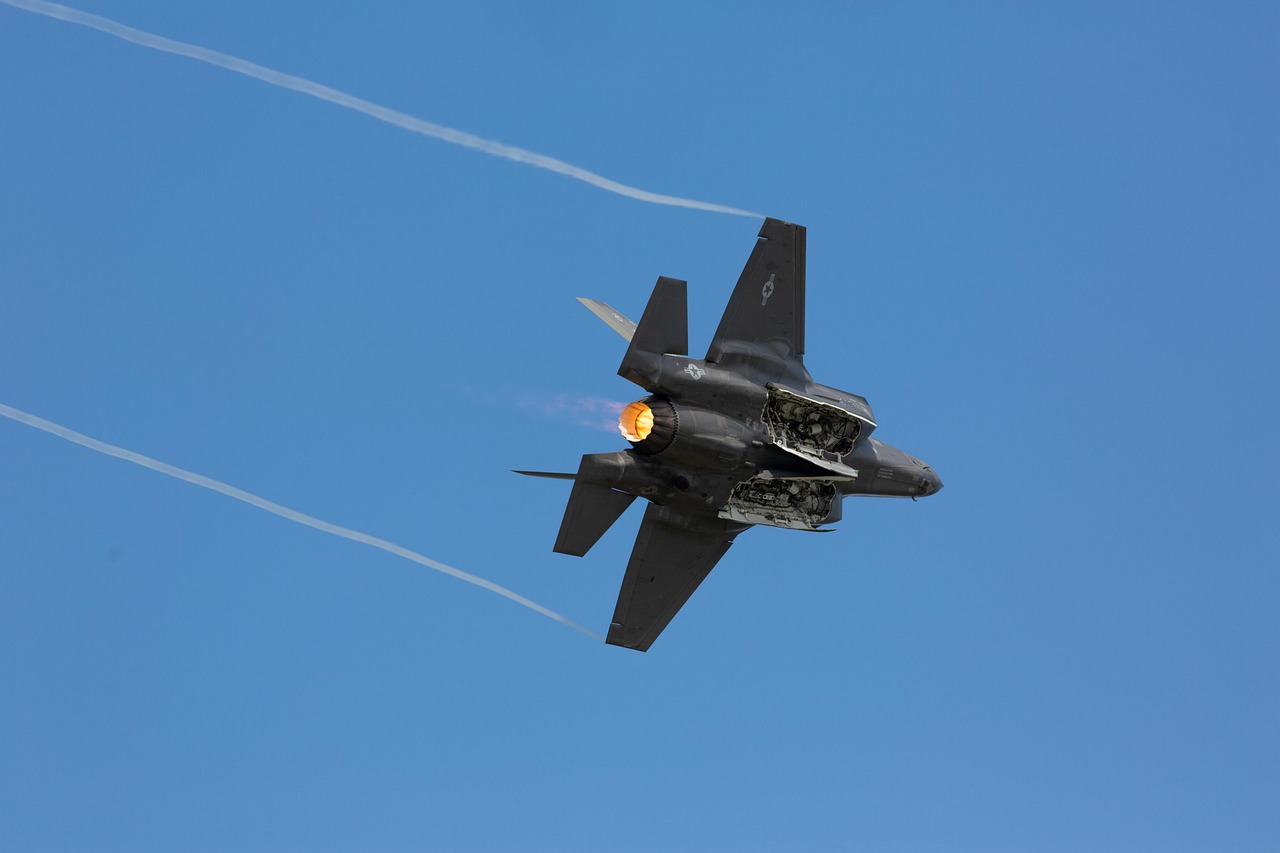Focus keyword: F-22 Raptor — A deep look at the aircraft’s design, stealth features, avionics, armament, operational history, and its role in modern air dominance.
Design philosophy and stealth
The F-22 was conceived in the late 1980s and 1990s as a response to the need for an airframe that could both avoid detection and decisively win aerial engagements. Its angular shape, internal weapons bays, radar-absorbent materials, and careful management of heat and exhaust signatures significantly reduce its radar cross-section compared to legacy fighters. Stealth is not just about shape — it’s systems integration. The Raptor’s sensors and communications are engineered to minimize electromagnetic emissions while providing superior situational awareness, allowing it to detect threats long before being detected itself.
Propulsion and supercruise
A signature feature of the F-22 is its ability to supercruise — sustained supersonic flight without afterburners. Powered by twin Pratt & Whitney F119 turbofan engines with thrust-vectoring nozzles, the Raptor can cruise at speeds above Mach 1.5 while conserving fuel and reducing thermal and infrared signatures associated with afterburner use. Thrust vectoring also improves maneuverability at both high and low speeds, giving pilots an edge in dogfights. Together, these propulsion traits turn the F-22 into a fast, agile, and long-range fighter with flexible mission profiles.
Avionics and sensor fusion
What truly sets the F-22 apart is the depth of its avionics integration. The aircraft uses a sophisticated sensor suite — including the AN/APG-77 radar — that performs high-resolution mapping, long-range detection, and low-probability-of-intercept modes. This radar, paired with infrared search and track (IRST) and electronic warfare systems, feeds a fused tactical picture to the pilot. Sensor fusion minimizes pilot workload and allows rapid, informed decision-making; targets from multiple sensors are combined into a single coherent display. Data-link capabilities allow Raptors to share tactical information with other aircraft and command nodes while maintaining emission control to preserve stealth.
Armament and mission flexibility
The F-22 carries its primary weapons internally to maintain stealth. Typical internal loadouts include air-to-air missiles such as the AIM-120 AMRAAM and AIM-9 Sidewinder, plus an internal M61A2 20mm cannon for close-range engagements. External pylons can be used when stealth is less critical, increasing payload for specialized missions. The Raptor’s combination of long-range missiles, short-range agility, and precise targeting makes it effective in beyond-visual-range (BVR) engagements as well as in close-in dogfights. Over time, software upgrades expanded its capability for limited ground-attack missions, though its primary role remains air superiority.
Operational history and real-world performance
The F-22 entered service in the mid-2000s and quickly became the U.S. Air Force’s premier air-to-air platform. While its combat use has been limited by both the nature of modern conflicts and tight export restrictions, Raptors have participated in numerous patrols, deterrence missions, and training exercises worldwide. Their presence provides strategic deterrence, and participation in multinational exercises helps allied forces test interoperability against a top-tier stealth platform. The F-22’s operational track record highlights its reliability in surveillance, interception, and quick-reaction alert roles.
Limitations and controversies
No aircraft is perfect, and the F-22 has faced several real-world limitations. High procurement and maintenance costs, combined with a complex supply chain and logistics footprint, constrained total production numbers. The program was also burdened by budgetary and political debates which ultimately led to early termination of production. Technical challenges — including issues with oxygen systems in early years and demanding maintenance for stealth coatings — required intensive attention from the Air Force and contractors. Additionally, strict export controls mean that only the U.S. operates the F-22, limiting shared operational lessons with allies and global economies of scale.
Upgrades and life-extension
To keep pace with evolving threats, the F-22 fleet has received continuous incremental upgrades. Software improvements enhance radar modes, electronic warfare capabilities, and weapon integration. Hardware and structural upgrades, along with maintenance improvements, extend airframe life and reduce downtime. These modernization programs aim to ensure the Raptor remains relevant against sophisticated air defenses and peer competitors. Sustaining such a complex fighter requires predictable funding and an experienced maintenance workforce, both of which the USAF has prioritized for frontline squadrons.
The Raptor in the modern multi-domain battlespace
Modern warfare emphasizes networks — connecting air, sea, land, space, and cyber elements into a single battlespace. The F-22’s role in this environment is less about single-handed “lone wolf” engagements and more about enabling a networked force. By collecting, processing, and sharing high-fidelity sensor data, Raptors act as both hunters and information nodes. Their stealth allows them to operate inside contested areas to detect enemy assets, guide friendly platforms, and open the battlespace for follow-on forces. In contested scenarios, Raptors contribute decisively to air dominance, enabling freedom of movement for allied air and ground operations.
Comparisons and legacy
Compared with fourth-generation fighters, the F-22 set new bars for stealth, integrated sensors, and high-performance flight. Later designs have drawn lessons from the Raptor’s strengths and limitations: some prioritize exportability and multirole flexibility, while others pursue the deep stealth and sensor integration seen in the F-22. Even as newer platforms and next-generation designs emerge, the Raptor’s legacy persists as a demonstration of what high-end air superiority can achieve when engineering, stealth, and avionics converge.
Specifications (summary)
- Role: Air superiority fighter
- Manufacturer: Lockheed Martin (with Boeing and Pratt & Whitney)
- Crew: 1
- Engines: 2 × Pratt & Whitney F119-PW-100 turbofans
- Max speed: > Mach 2 (supercruise capability at sustained supersonic without afterburner)
- Armament: Internal bays for AIM-120 AMRAAM, AIM-9 Sidewinder; M61A2 20mm cannon; optional external stores
- Notable sensors: AN/APG-77 AESA radar, integrated EW and sensor-fusion suite
Conclusion
The F-22 Raptor remains a cornerstone of modern airpower: a machine built to dominate the skies through stealth, speed, and sensor superiority. While expensive and technically demanding, its capability to control contested airspace is unmatched in many respects. As military aviation evolves with new threats and technologies, the lessons learned from the F-22 program — particularly around stealth integration, sensor fusion, and sustainment — will continue to shape future fighters. For now, the Raptor still represents an apex in air-superiority design: purposeful, potent, and a potent symbol of modern aerial warfare.











